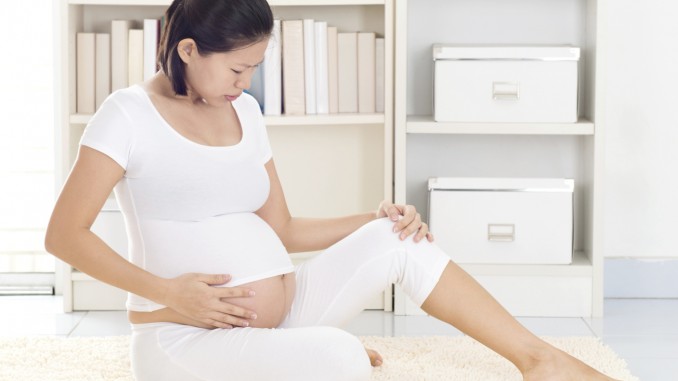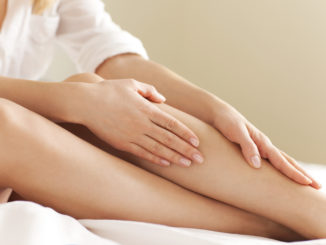
As a woman, I care a great deal about my health and beauty. When one suffers, the other suffers as well. Therefore, when I do not feel my best at being beautiful, I can usually trace the reason back to something dealing with my health. As of late, I have noticed something going on with my legs. They look a bit bluer in some areas than they did in the past. My suspicion? I believe them to have varicose veins. Dealing with these veins can be a pain sometimes, but understanding more about them is essential to dealing with them. Here is a closer look at these veins, what causes them, and how they can be dealt with in the long run.
What Are They?
Varicose veins often look blue or dark purple, and they look almost as if sinew in the legs twists and bulges around a specific area. They are not always painful – at least mine are not. In most cases, they are just not fun to look at.
What are Some Varicose Vein Symptoms?
There are a few varicose vein symptoms and signs to consider. First of all, the leg they appear on can feel heavy or even achy. At the same time, the area surrounding the veins can throb or produce a burning sensation. Furthermore, they can cause swelling or cramping in calves and feet. Itching might happen as well, but the main hallmark problem here is worsened pain after prolonged periods of either sitting or standing.
What Causes Them?
First of all, I want to cover some basics, even if they seem to be common sense. Arteries work at carrying blood to and from the heart to different places throughout the body. Veins function in the return pathway more than arteries, so their job is to make sure blood recirculates back through the heart. It is important to note that veins in our legs work against gravity to perform this task. Therefore, muscles in our legs pump and contract to send blood back north. Most veins have elastic walls to withstand the pressure from this task.
I know for a fact that my veins do not perform this job as well the older I become. They lose elasticity, and the valves in veins that help to control blood flow often break down as well. Therefore, blood can pool in veins and cause them to become large.
Much the same happens to women during pregnancy. While I was pregnant last, I noticed that blood did not flow as well down into and back from my legs. Most of this situation occurs because my body focused more on supplying blood to my baby than to my extremities. Therefore, some veins in my legs started to become enlarged. While these veins seem like they will be varicose for the rest of my life, I know there are a few treatment options out there to seek to remove them and prevent them from causing other problems.
Treatment Options for These Veins
There are a few, different treatment options for these veins. Here is a closer look at a few of them.
- Self-Care
Many women, me included, do not fare well when it comes to taking care of us. More often than not, familial responsibilities and job requirements come first and replace the need to take care of our body and mind. I find this statement to be very true in my life at current. However, there are a few things women can do in order to prevent these veins from forming through self-care. One trick to try is exercise and weight loss. At the same time, legs need to be elevated from time to time throughout the day for relaxation purposes. Wearing loose clothing also helps with circulation in the legs, too. So, say goodbye to skinny jeans and leggings for a while.
- Compression Stockings
This suggestion might seem as if it flies in the face of the statement about tight clothes made previously. However, compression stockings focus on a different purpose than tight clothing. They apply a slight, constant pressure to legs to give them a soft squeeze. This squeezing motion helps to increase circulation. Therefore, veins and leg muscles perform their tasks a bit more efficiently. Different levels of compression exist across different brands, so a doctor should be consulted before they are purchased. At the same time, they can easily be found at pharmacies, so a pharmacist might be able to provide some insight into which brand or type to use for these veins.
- Sclerotherapy
This type of therapy requires smaller and medium-sized veins of the varicose variety to be injected with a solution. This solution helps to scar over the veins and shut them off from use completely. Eventually, the veins will fade altogether. The body will teach itself to reroute around the veins, too. While some veins might need to be injected more than once, I have found this treatment to be rather effective. The bonus to this treatment is it does not require any anesthesia.
- Foam Varicose Veins Treatment
Another version of sclerotherapy is called foam varicose veins treatment. With this treatment, a doctor injects larger veins with a foam solution in order to close the vein and seal it off. It works the same as the previous therapy, just on larger veins. While this technique is rather new, many patients experienced success with it.
- Laser Surgeries
Now, things start to become a little more serious. With laser surgeries, smaller veins and spider veins close off in response to large bursts of light, making them slowly fade over time. However, needles and incisions are not made, so the procedure is not invasive.
Conclusion
When it comes to dealing with varicose veins, I do not mess around. I know they look a little intimidating, and they do not seem to cause any problems. However, I do not like to take any chances. Combining a few of these treatment methods seems to work best, and those veins will fade over time for sure.
Please check out this infographic, created by USA Vein Clinic, a provider of varicose vein treatment in New York.
Featured image courtesy of MassageMag.com.



Be the first to comment